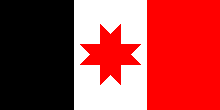Geographical Features:
The Udmurt Republic is located in the Russian Federation in the western part of the Urals,
bordering on Tatarstan and Bashkortostan. Area: 42,100 km2.
Population:
The Udmurts are a Finnic people. The population of Udmurtia is approximately 1,644,000 people. The majority of the population in Udmurtia is Russian (59%), followed by Udmurts (31%) and Tatars (7%).
Languages:
As a result of the russification of Udmurt the possibility to study the Udmurt language almost
disappeared along with the Udmurt culture.
Organisations:
Udmurtia is represented in UNPO by the Udmurt Counsel (Udmurt Kenesh). Its objectives are to
secure a healthy environment, to ensure equal education for the Udmurt and for the Udmurt
children to be taught in their own language, to promote a management of the economy in the
interest of the indigenous Udmurt people, and to realise the right of to self-determination.
Economy:
The Udmurt Republic is rich in mineral resources producing oil and disposing over reserves of
peat and nitro-methne fields, while timber is also of importance.
History:
In the 8th c., Udmurtia came under Khazar dominance, but by the mid 9th. c, the Volga Bulgarians had significantly increased their cultural and political influence in the region, and displaced Khazar influence among the Udmurts. The Volga-Bulgarians remained in control until the Mongol-Tatars conquered the Udmurt land in the 1230s.
Russian cultural and economic contacts with the Udmurt date back to the 12th c., but it was not until the middle of the 16th c. that the Russians established control over the territory. In the 2nd half of the 16th c., the Udmurts become subjects of the Grand Duchy of Moscow; Russian Orthodox missionaries first reached the Udmurt in the 16th c., and began the long, difficult attempt to convert them to Christianity. In the early 1800s, Russian nationalists began to worry about all the distinct nationalities among them, and the missionary work was intensified, along with efforts to develop literary languages for the Udmurts and other groups, based on the Cyrillic alphabet. Most of the Udmurts only superficially accepted Christianity, retaining their old nature religion, and those living in close proximity to the Tatars also adopted elements of Islam.
1919 - The Udmurt National Congress was reconvened and disbanded.
In 1920, three years after the Bolshevik revolution, the Votyak Autonomous Oblast (AO) was established for the Udmurts. In 1932 it was renamed the Udmurt AO, and in 1934 it was elevated to Udmurt ASSR.
1921 - Famine breaks out as a result of the civil war in Russia, many Udmurts flee to Siberia.
In the 1930s, forced collectivization, industrialization and relocation, the introduction of Russian as the language of instruction in public schools brought major changes to the life of the Udmurts. By 1937 tens of thousands of Udmurts have been deported, almost the total Udmurt intelligentsia has been annihilated, but still, they have maintained a surprisingly cohesive sense of identity up to the present date.
World War II - Large production facilities together with their employees are evacuated to the Udmurt territory, which increases the proportion of immigrants, mainly Russians, in the population.
1950-60s - Great numbers of Udmurts move to work on the big construction projects in Volgograd, Sverdlovsk (Yekaterinburg) and Siberia, or migrate to Kazakhstan and the Ukraine. Between 1971 and 1988 more than a thousand Udmurt villages were closed down as non-viable and the inhabitantswere forced to move elsewhere.
1991 - Udmurtia became a member of UNPO.
1995 - The Russian Federation and Udmurtia signed a series of agreements defining the respective responsibilities of the Federation and the Republic with regard to the division of state property, law and order, defence industries, the use of oil and forest resources and environment protection.
1996 - The Udmurt Republic passed a bill on ”national education” which guarantees that the people have the right to receive all forms of education and that all people have the right to be educated in their native language.
Current situation:
Udmurtia is facing a major decline in economic productivity. Progress was made, however, with
respect to the expression of Udmurt culture and the rights to educate in the Udmurt language. About 66% of the Udmurts live in their ethnic Republic, forming 30% of the population of the Republic (1992). 92.5% of the Udmurts lived in rural areas in 1939. In the rural areas Udmurts are in the majority and their proportion has increased in recent years, as other people are leaving the countryside at a greater rate than the Udmurts are. The increase in their relative numbers has not, however, meant an increase in their total population, as the demographic structure of the Udmurts has constantly deteriorated.
Source:
Norwegian Institute of International Affairs [NUPI] - Centre for Russian Studies
Links to external websites about the Udmurt people, their land, history, and culture (pages will open in new window):
Endangered Uralic Peoples:
Udmurts
Unrepresented Nations and Peoples Organization (UNPO):
Udmurt
Wikipedia:
Udmurt
Photos: www.rkomi.ru/finugr




